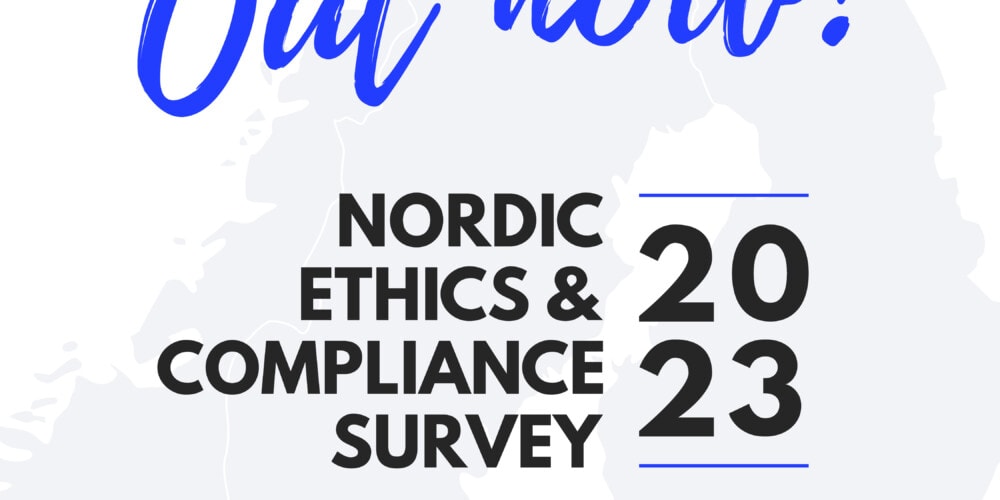Why supply chains have become a top priority on corporates’ Environmental, Social, and Governance (ESG) agendas.
Interview with Dorit Schulte, Director at fp – Frank Partners
Supply chains have moved to the top of many companies’ ESG and sustainability agendas. What is driving this broader notion of corporate accountability?
Many of our corporate clients increasingly regard decent working conditions, a minimal environmental impact and good governance across their supply chains as core aspects of their corporate sustainability strategy and ESG mandates. What we hear across the board is that demand for supply chain transparency and sustainability is often most strongly pushed for by downstream customers. Corporate and retail customers alike increasingly express the wish to understand where their purchases come from and how they are made.
Similarly, companies face growing pressure from their investors, who are themselves under increasingly stringent disclosure obligations. For instance, many financial investors will need to start reporting on the Scope 3 carbon footprint of their investment assets. This obliges them to measure and disclose not only emissions produced by portfolio companies themselves, but also emissions from those companies’ wider supply and value chains. Additionally, investors will need to show that they have implemented so-called Minimum Safeguards that ensure business activities carried out by their portfolio companies are aligned with certain social principles.
That means there is, in addition to an ethical imperative, increasingly a commercial need for companies and investors to implement solid ESG principles and targets across their supply chains.
On top of that, recently implemented supply chain due diligence laws across Europe – for instance in Switzerland and Germany – and a proposal for a similar EU Directive are creating regulatory pressure for corporates to live up to duty of care obligations for social and environmental conditions across their supply chains. Whilst national laws have so far mostly targeted larger corporates with many thousands of employees, the proposed EU Directive looks set to be more stringent and may apply to much smaller companies as well.
In any case, we are already seeing a trickle-down effect here: even companies falling below these thresholds interpret the regulatory changes as a wider signal that corporate supply chain accountability will gain importance across the board. This in turn motivates them to consider ESG factors in their supply chain management.
What can companies do to integrate ESG principles into their supply chain management and what challenges may they face in doing so?
For most companies – especially those with a global supplier network – the first step is to properly understand their supply chains and obtain visibility not just over direct suppliers but also those in second and third tiers. This is not always easy and, indeed, may present the biggest challenge, not least because first-tier suppliers may be reluctant to disclose their supplier networks for commercial reasons or may have little visibility themselves. Especially for large corporates who often have thousands of suppliers, the process of increasing transparency can require time and significant internal resources.
Once a supply chain network is properly mapped and understood, we at fp recommend that companies take a risk-based approach to supplier due diligence that initially prioritises the riskiest sectors and countries. This means allocating resources where a comparatively higher risk is visible. For instance, an EU-based textile company sources part of its garments from a partner based in another – highly regulated – EU member state, but also buys a share of its products from a supplier in a Middle Eastern country with a track record of poor working conditions in the textile sector. The company’s initial risk assessment may conclude that human rights and labour risks are likely higher for the latter supplier and focuses its initial due diligence efforts accordingly. At the same time, the company may identify risks specifically relating to particular input materials or sectors – independently of where those are located – such as human rights abuse and environmental risks along global cotton supply chains – and prioritises due diligence efforts on suppliers dealing with such materials.
It is always crucial to emphasise that there may be company specific risks which are independent of the supplier country and sector.
Hence we recommend to eventually roll out at least some degree of due diligence on all suppliers.
Companies also need to establish solid internal processes to manage ESG across supply chains on an ongoing basis. For instance, we see that it is becoming increasingly standard practice to have Supplier Codes of Conduct in place that include various requirements on ESG-related issues. Additionally, fp advises companies to engage regularly on ESG matters with suppliers, and especially those identified as higher risk during the due diligence process. This engagement can take place through on-boarding processes for new suppliers, audits of existing suppliers, and joint workshops on ESG topics. Businesses should also explore collaborating with NGOs and other organisations on sector-specific issues and risks. Finally, we recommend that companies consider signing up to a universal or industry-specific supply chain compliance framework or officially commit to relevant industry standards to externally validate their efforts to integrate ESG into their supply chains.
What role does the environmental impact of companies’ supply chains play in this debate?
The environmental impact and especially the carbon footprint of corporates’ supply chains is being increasingly thrust into the spotlight. As I mentioned earlier, the most prominent examples are increasingly tight regulatory requirements and stakeholder demands around the reporting of Scope 3 emissions, which on average account for around two thirds of a company’s carbon footprint. An interesting aspect here is that Scope 3 emissions can unearth significant environmental footprints in what are usually perceived as fairly “clean” industries. A good example here are software companies, which tend to have a fairly significant carbon footprint, largely stemming from energy consumption at external data-centre operators.
Does the increasing focus on ESG impact how companies structure their global supply chains?
Most larger corporates, but also SMEs, are becoming more mindful of ESG factors across their supply chains and as such, are more likely to base business decisions on ESG-related risks or opportunities. However, what we are seeing above all is that companies are most likely to act when commercial and ESG-related risks coincide. For instance, the COVID-19 pandemic caused severe supply chain disruptions across the world – but especially in the Asia-Pacific region. In response to this, we have witnessed that companies are increasingly exploring options closer to home and consider “nearshoring” their supply chains to minimise disruption risks and increase resilience. Often, other ESG-related concerns – such as about human rights – in places like China, were already lingering in the back of managers’ minds and can provide the decisive argument for supply chain reallocation.



